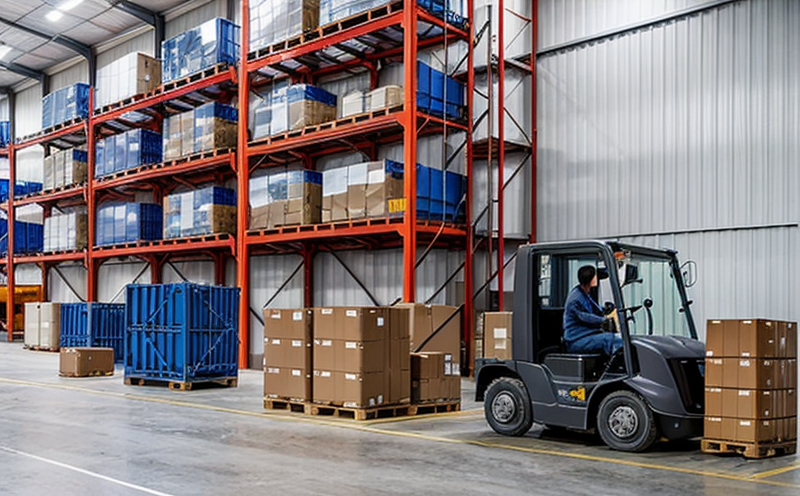EASA CS-27 Rotorcraft Certification Compliance Testing
The European Union Aviation Safety Agency (EASA) certification process is a critical component in ensuring the safety and reliability of rotorcraft, including helicopters. EASA CS-27 sets stringent requirements for rotorcraft design, production, and operational standards to ensure compliance with aviation safety regulations.
To achieve EASA CS-27 certification, manufacturers must undergo rigorous testing that ensures their products meet all specified criteria. This involves a comprehensive suite of tests designed to evaluate various aspects of the rotorcraft’s performance, including structural integrity, fatigue life, operational stability, and environmental adaptation. Our laboratory specializes in providing high-quality testing services tailored specifically for these requirements.
Our team leverages state-of-the-art facilities equipped with advanced equipment capable of simulating real-world conditions under which rotorcraft will operate. This includes but is not limited to dynamic load testing machines, vibration analyzers, and environmental chambers that can replicate extreme temperature changes and atmospheric pressures found at high altitudes.
The first step in the certification process typically involves detailed analysis of the design documentation provided by the manufacturer. Our experts review this material carefully to ensure it adheres strictly to CS-27 standards. Following successful initial reviews, actual testing begins using industry-standard methods outlined within the regulations themselves.
One key aspect of our service is the ability to perform accelerated aging tests on composite materials used in rotorcraft construction. These tests help identify any potential weaknesses or flaws that might only become apparent over time due to prolonged exposure to environmental factors like UV radiation and moisture. By identifying these issues early, manufacturers can address them before production begins.
Another important test involves evaluating how well the aircraft performs under various loading conditions. This could include simulating takeoffs and landings at different speeds or assessing structural response during emergency maneuvers such as rapid deceleration or sharp turns. Our facility houses specialized rigs capable of recreating these scenarios accurately, allowing us to provide precise data on how each component behaves.
Once all required tests have been completed successfully, our team compiles detailed reports summarizing every measurement taken throughout the process. These documents serve as irrefutable evidence that your product meets all necessary regulatory requirements. They also form part of the submission package sent directly to EASA for final approval.
In addition to technical excellence, we pride ourselves on excellent customer service. Our clients benefit from clear communication channels allowing them constant updates regarding progress and results at every stage. We understand that achieving certification can be a complex journey; therefore, our goal is always to make this process as smooth and efficient as possible.
By partnering with us for EASA CS-27 rotorcraft certification compliance testing, you gain access not just to cutting-edge technology but also to experienced professionals who understand both the technical nuances of your product and its broader implications within the aviation industry. Together we can ensure that every aspect of your design is thoroughly vetted against stringent international standards.
Why It Matters
Compliance with EASA CS-27 regulations ensures that rotorcraft manufacturers adhere to the highest levels of safety and performance. Meeting these standards demonstrates a commitment to excellence, which enhances trust among customers and regulators alike. Failure to comply can result in significant delays or even outright rejection of your product during certification.
From an operational perspective, ensuring compliance also means that operators can expect reliable aircraft with minimal maintenance needs. This translates into lower overall costs over the lifecycle of the asset while maintaining high standards of safety and efficiency.
The importance of this testing extends beyond individual manufacturers; it plays a crucial role in advancing the entire industry by promoting innovation through rigorous evaluation processes. By setting these benchmarks, EASA helps drive continuous improvement across all segments of the aviation sector.
International Acceptance and Recognition
EASA CS-27 certification enjoys widespread recognition globally, making it one of the most sought-after credentials in the rotorcraft industry. Many countries have adopted similar standards or aligned their own regulations closely with those set forth by EASA.
For manufacturers looking to expand into new markets, holding this certification opens doors to numerous opportunities worldwide. It provides assurance that your product meets international quality benchmarks, thereby facilitating smoother market entry and greater acceptance among potential buyers.
Beyond mere compliance, meeting these stringent requirements showcases a company’s dedication to excellence. Potential clients are more likely to choose products from firms proven capable of adhering to such high standards, creating competitive advantages even in established markets.
Environmental and Sustainability Contributions
EASA CS-27 certification encompasses not only safety aspects but also environmental considerations. Modern rotorcraft design must balance performance with reduced ecological impact, addressing issues like fuel efficiency, noise pollution, and emissions.
Our testing services go beyond just structural integrity; they include evaluations aimed at minimizing the carbon footprint associated with manufacturing processes and operational phases. For instance, we can help assess how different materials affect energy consumption during flight or identify ways to reduce waste generation throughout production cycles.
This focus on sustainability aligns with broader trends within the aviation sector towards greener practices. By incorporating these elements into your product development strategy, you contribute positively to environmental stewardship while simultaneously enhancing brand reputation and attracting environmentally conscious consumers.





